Toilet design is a crucial aspect of any home or building. A well-designed toilet can not only enhance the aesthetics of your space but also improve its functionality. With the advancements in technology and design, there are a plethora of options available to homeowners and designers alike. From compact toilets to luxurious ones, the possibilities are endless.
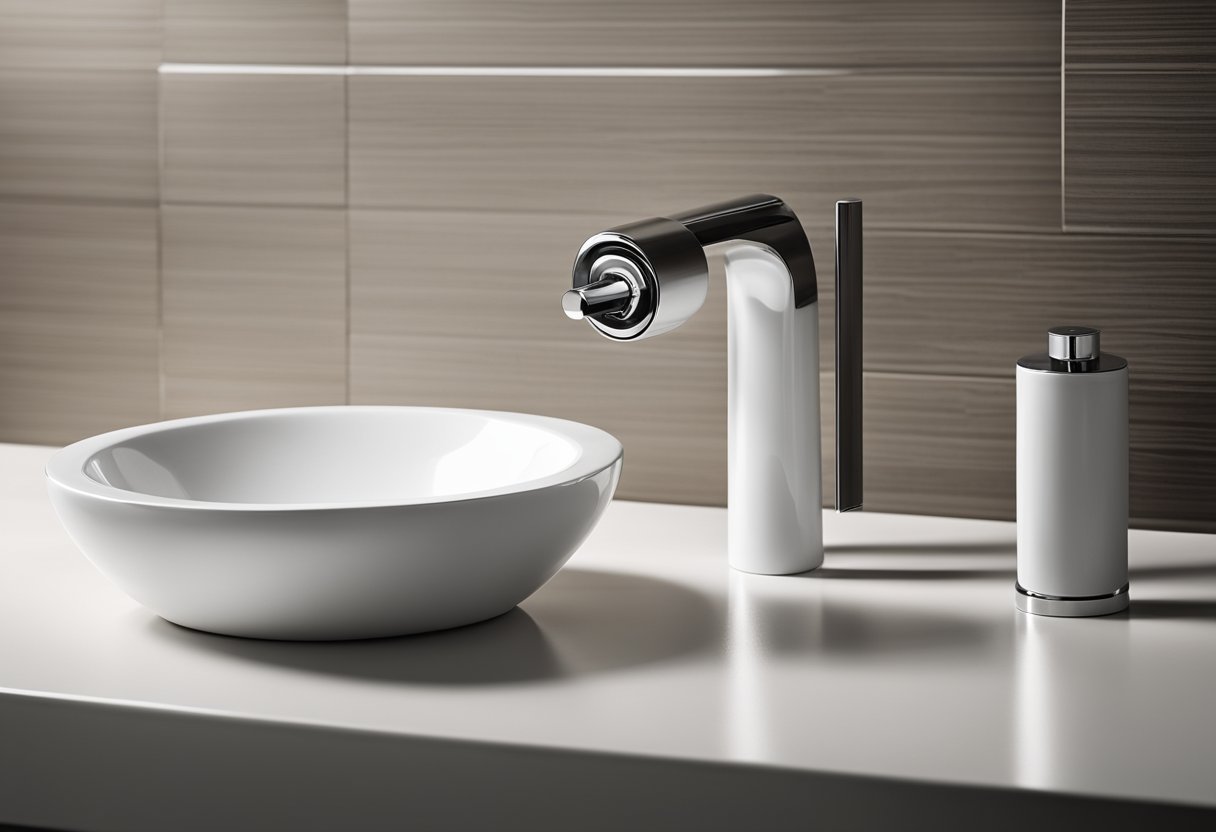
Understanding the fundamentals of toilet design is essential to create a space that is both functional and visually appealing. Factors such as layout, materials, fixtures, and lighting play a crucial role in achieving the desired look and feel. Additionally, it is important to consider the safety and accessibility features that are necessary for people of all ages and abilities.
Key Takeaways
- Understanding the fundamentals of toilet design is crucial for creating a functional and visually appealing space.
- Factors such as layout, materials, fixtures, and lighting play a crucial role in achieving the desired look and feel.
- Safety and accessibility features are necessary for people of all ages and abilities.
Historical Evolution of Toilet Design
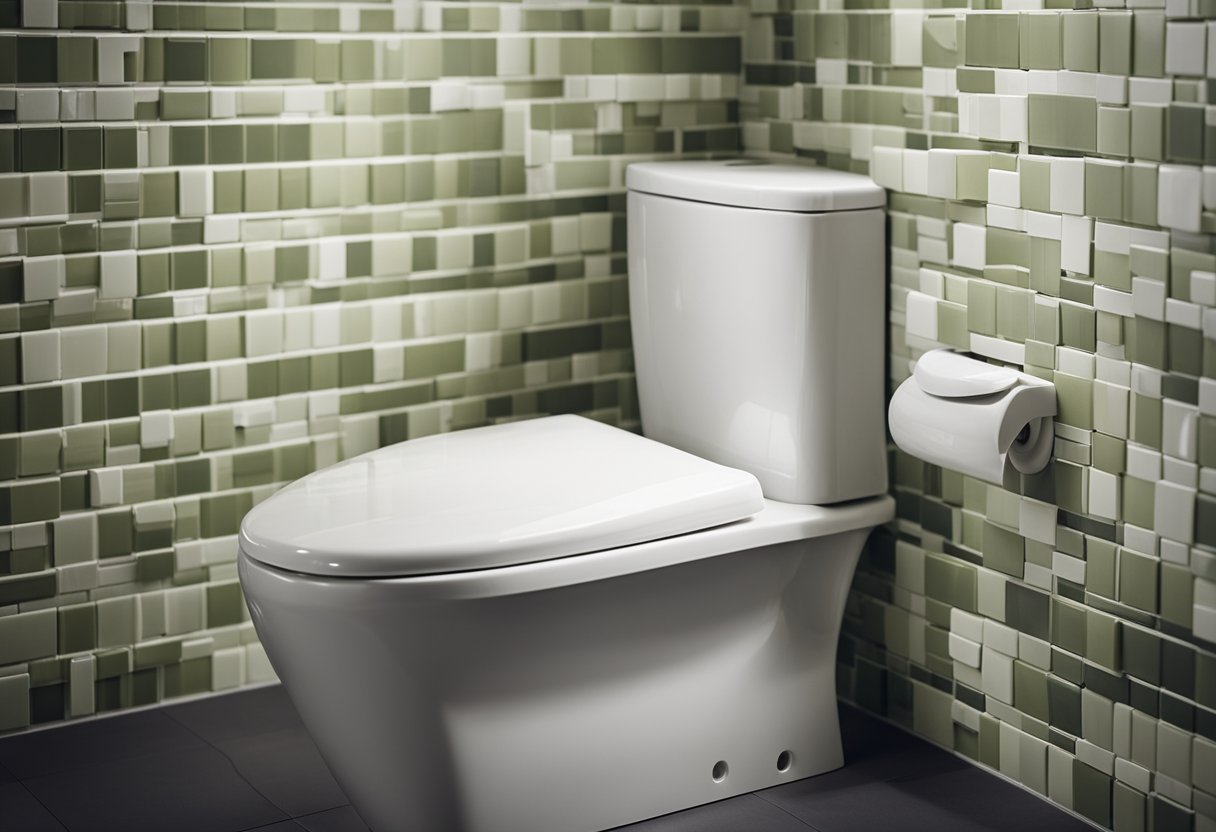
Toilet design has come a long way since the ancient times. In the past, toilets were simple holes in the ground or wooden benches with holes. These were often shared by several people and were not very hygienic. However, over time, people began to realize the importance of cleanliness and started to develop new toilet designs.
One of the earliest examples of a more sophisticated toilet design is the flush toilet. The first flush toilet was invented in 1596 by John Harrington, who was an English courtier and godson of Queen Elizabeth I. His design included a water cistern and a valve that allowed the water to be released into the bowl, flushing the waste away. The flush toilet was a significant improvement over earlier designs, as it allowed for more efficient waste disposal and better hygiene.
In the 19th century, new toilet designs became more elaborate and decorative. The Victorians, in particular, were known for their love of ornate and elaborate designs, and this extended to their toilets. Victorian toilets often featured intricate patterns and designs, and were made from high-quality materials such as porcelain and marble.
In the 20th century, toilet design became more streamlined and minimalist. Modernist designers such as Le Corbusier and Frank Lloyd Wright championed clean, simple lines and a focus on functionality. This led to the development of new toilet designs that were sleek and efficient, with a focus on ease of use and hygienic cleaning.
Today, toilet design continues to evolve and change. New materials and technologies are constantly being developed, and designers are always looking for new ways to improve the user experience. Whether you prefer a traditional design or a more modern style, there is a toilet out there that will suit your needs and preferences.
Understanding Toilet Design Fundamentals
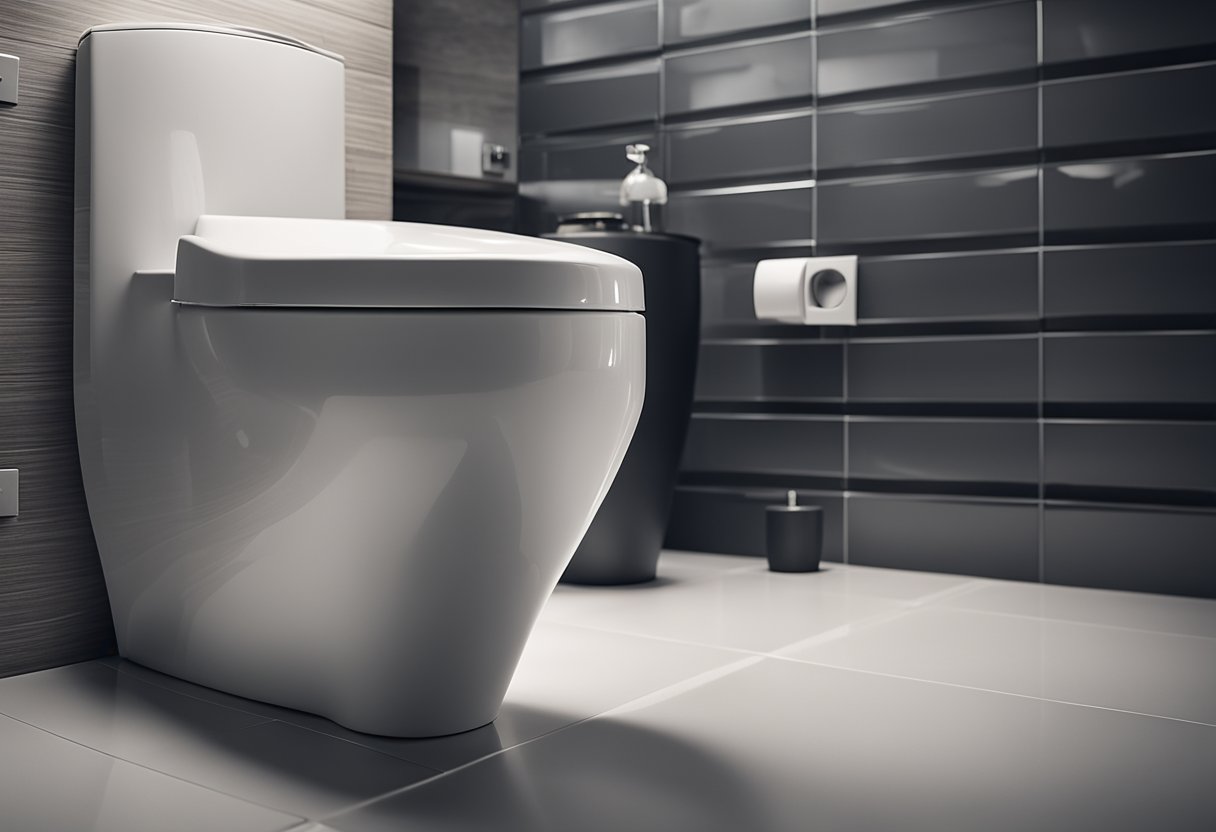
When it comes to toilet design, there are several key fundamentals that you need to consider. From space planning and layouts to plumbing and electrical work, lighting considerations, ventilation, and hygiene, each aspect plays an important role in creating a functional and user-friendly toilet space.
Space Planning and Layouts
One of the most important considerations when designing a toilet is space planning and layouts. This is especially important if you have limited space to work with. To make the most of the available space, it’s important to carefully consider the placement of fixtures like the toilet, sink, and shower.
Plumbing and Electrical Work
Plumbing and electrical work are also important considerations when it comes to toilet design. You need to ensure that the plumbing and electrical systems are properly installed and in good working order. This includes ensuring that the water supply and drainage systems are properly configured, and that all electrical wiring is properly grounded and installed to code.
Lighting Considerations
Lighting is another important consideration when it comes to toilet design. Natural light is ideal, but if this is not possible, you can use spotlights, track lights, or recessed lighting to create a bright and welcoming space. Strategic lighting can also be used to highlight key features of the toilet, such as the sink or shower area. LED lighting is a popular choice for toilet design, as it is energy-efficient and long-lasting.
Ventilation and Hygiene
Finally, ventilation and hygiene are important considerations when it comes to toilet design. Proper ventilation is essential to prevent the buildup of moisture, which can lead to mould and mildew growth. It’s also important to ensure that the toilet is easy to clean and maintain, with fixtures and surfaces that are resistant to stains and bacteria.
In summary, when designing a toilet, you need to consider space planning and layouts, plumbing and electrical work, lighting considerations, ventilation, and hygiene. By taking these factors into account, you can create a functional and user-friendly toilet space that meets your needs and fits your personal style.
Style and Aesthetics
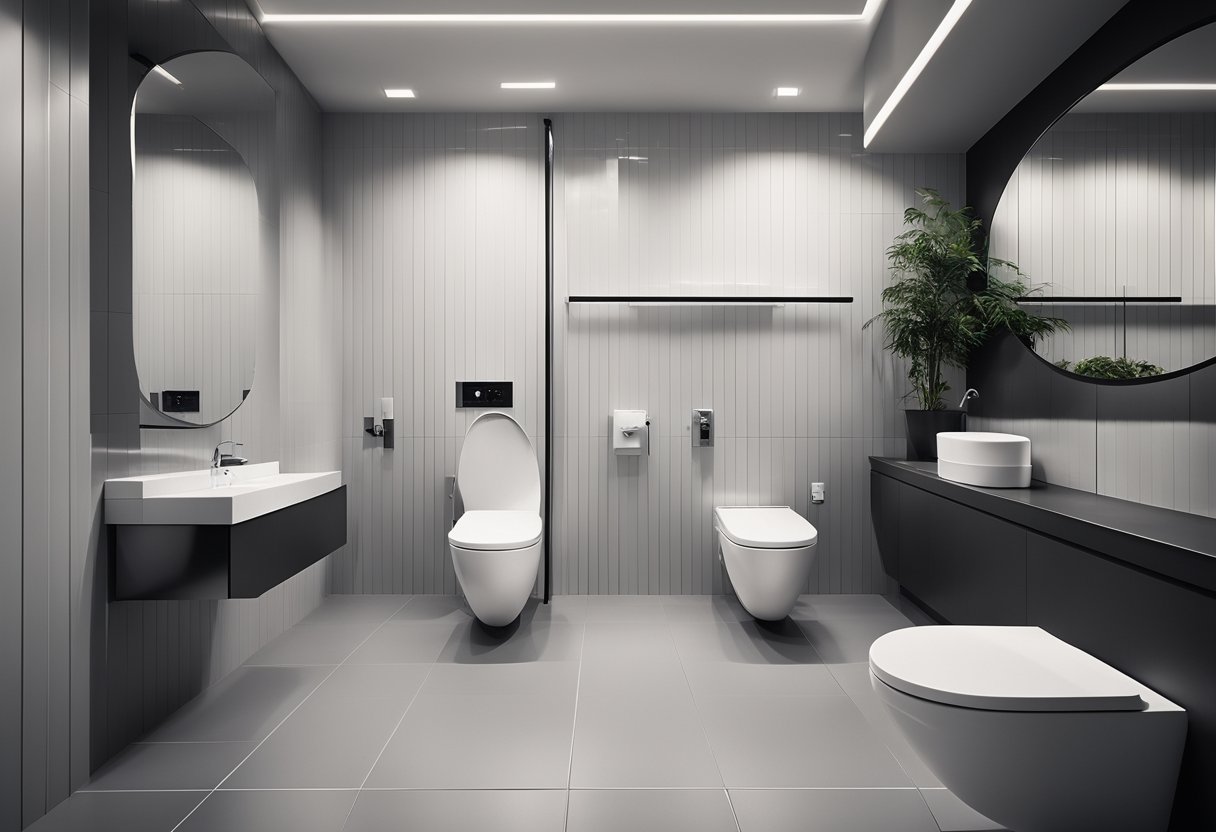
When it comes to toilet design, the style and aesthetics play a pivotal role in creating a welcoming and visually appealing space.
Choosing a Design Style
Selecting a design style that resonates with your taste is essential. Whether you prefer the minimalistic and clean lines of Scandinavian design, the raw and edgy feel of industrial design, or the free-spirited and eclectic vibe of bohemian design, your toilet can be transformed to reflect your unique style.
Incorporating Textures and Patterns
Integrating various textures and patterns can add depth and character to your toilet space. Consider introducing patterned tiles for a pop of visual interest or experimenting with different textures to create a multi-dimensional look that elevates the overall design.
Colour Schemes and Lighting
The choice of colour schemes and lighting can significantly impact the ambience of your toilet. Warm lighting can create a cosy and inviting atmosphere, while the strategic use of colours can enhance the visual appeal and tie the design elements together seamlessly.
Materials and Fixtures
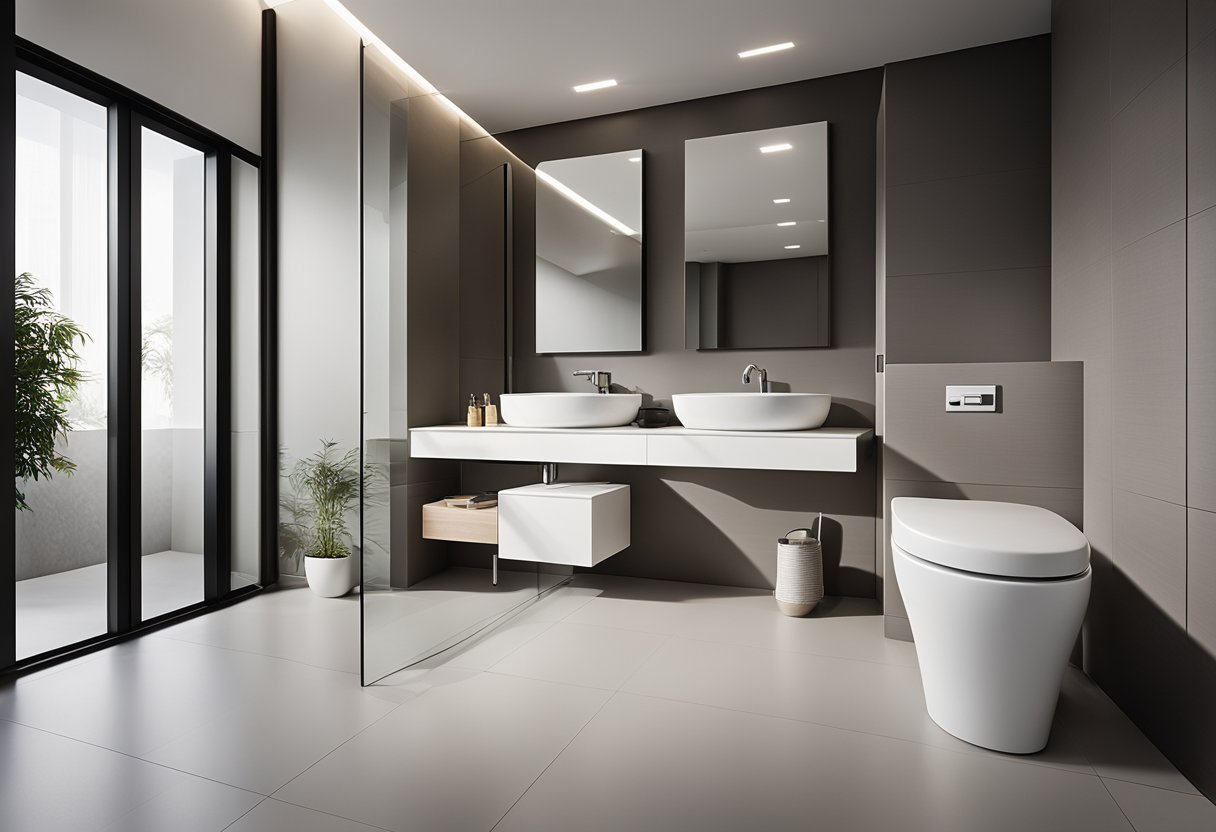
When it comes to toilet design, selecting the right materials and fixtures is essential to ensure durability and longevity. Here are some tips to help you choose the right materials and fixtures for your toilet.
Selecting Durable Materials
When selecting materials for your toilet, it’s important to choose ones that are durable and long-lasting. Natural materials such as stone and wood can add a touch of elegance to your toilet, but they may not be the most practical choice. Porcelain and ceramic are popular choices for toilet fixtures as they are durable and easy to clean. Glass is also a great option for adding a modern touch to your toilet design.
Fixtures and Fittings Selection
The fixtures and fittings you choose for your toilet can make a big difference in the overall look and feel of the space. Dated fixtures can make your toilet look old-fashioned and uninviting. Consider updating your fixtures to give your toilet a fresh, modern look. Wall-mounted sinks and toilet bowls can help to maximise space in smaller toilets, while pedestal sinks can add a classic touch to larger toilets.
When selecting fittings, it’s important to choose ones that are both functional and aesthetically pleasing. Choose fittings that complement the overall design of your toilet. From taps and showerheads to towel rails and toilet roll holders, every detail counts.
In summary, selecting the right materials and fixtures is essential to ensure the longevity and durability of your toilet. Consider natural materials for a touch of elegance, and choose fixtures and fittings that are both functional and aesthetically pleasing. With the right selection, you can transform your toilet into a stylish and inviting space.
Maximising Space in Compact Toilets
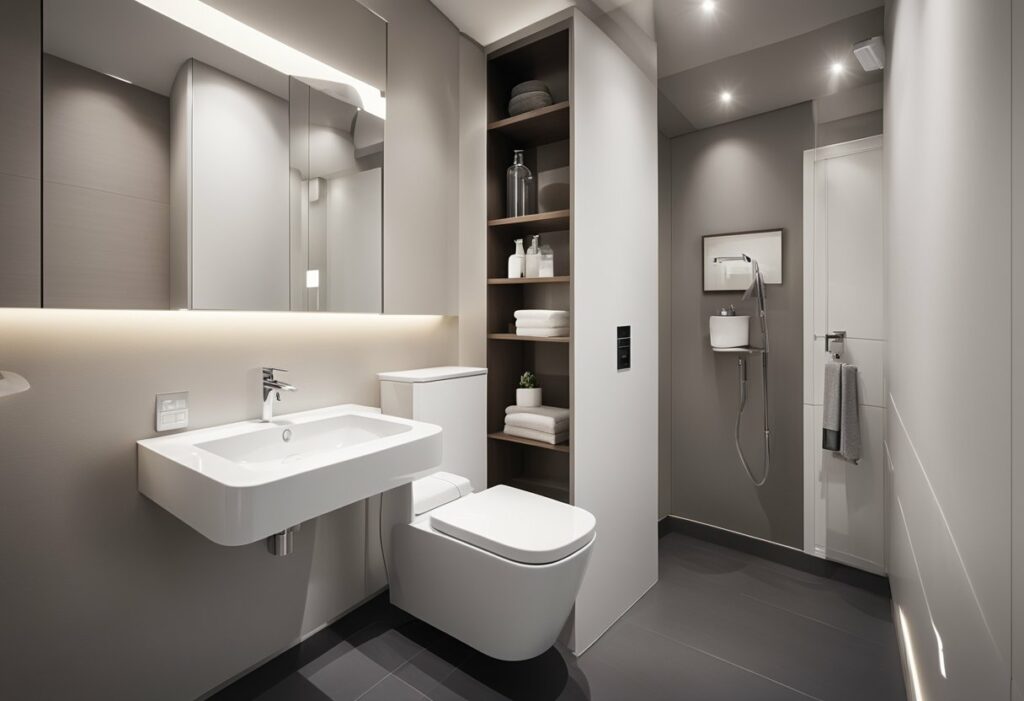
If you have a small bathroom, you may be struggling to find ways to make the most of the limited space. Fortunately, with some smart planning and creative storage solutions, you can create a functional and stylish compact toilet without sacrificing on comfort or functionality.
Storage Solutions
One of the biggest challenges in a small bathroom is finding space for storage. Fortunately, there are many storage solutions that can help you make the most of the limited space. For example, you can install cabinets or shelves above the toilet to store towels, toiletries, and other bathroom essentials. You can also use baskets or bins to organize items and keep them out of sight.
Smart Layout for Limited Space
When it comes to designing a compact toilet, it’s important to think carefully about the layout. By planning the space carefully, you can create a functional and comfortable bathroom that maximizes every inch. For example, you can install a wall-mounted toilet to save floor space and create a more streamlined look. You can also choose a compact sink or vanity that doesn’t take up too much space.
Another important consideration is the location of the toilet. If possible, try to position it in a corner or against a wall to free up more floor space. You can also consider installing a pocket door or sliding door to save space and create a more open feel.
Overall, with some smart planning and creative storage solutions, you can create a functional and stylish compact toilet that maximizes every inch of space. By thinking carefully about the layout and storage options, you can create a bathroom that is both comfortable and functional, even in a limited space.
Renovation Process and Planning
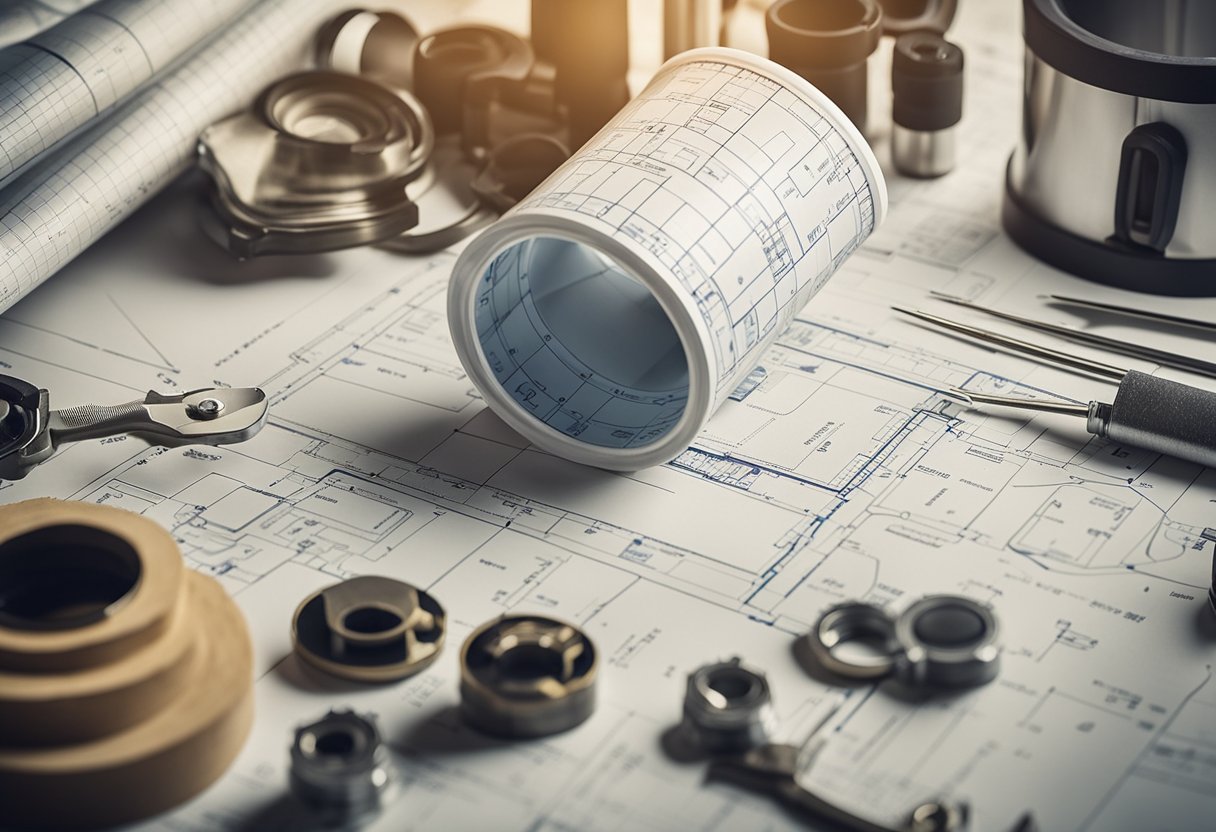
Renovating your toilet can be a daunting task, but with proper planning, it can be an exciting journey. A toilet renovation can significantly improve the comfort and functionality of your bathroom. Here are some important factors to consider when planning your renovation journey.
Budgeting and Cost Management
Budgeting is a crucial aspect of any renovation project. You need to determine how much you are willing to spend on your toilet renovation. The cost of a toilet renovation can vary depending on the extent of the renovation and the materials used. It is essential to create a realistic budget and stick to it.
To ensure that you stay within your budget, consider the cost of labour, materials, and any additional expenses that may arise during the renovation process. You can also consider cutting costs by opting for affordable materials or repurposing existing fixtures.
Working with Contractors and Designers
Working with a contractor or designer can make the renovation process smoother and more efficient. A contractor can help you manage the renovation process and ensure that everything is completed on time. They can also provide valuable insights and recommend materials that fit within your budget.
When choosing a contractor or designer, it is essential to do your research. Look for professionals with experience in toilet renovation and check their portfolios to get an idea of their work. You can also ask for recommendations from friends or family who have undergone a bathroom renovation.
Working with an interior designer can also help you create a cohesive design for your bathroom. They can help you choose colours, materials, and fixtures that fit your style and budget.
In conclusion, proper planning and budgeting are essential for a successful toilet renovation. Working with experienced contractors and designers can also help you achieve your renovation goals. With the right resources and a clear vision, you can transform your bathroom into a functional and stylish space.
Innovative Design Ideas for Modern Toilets
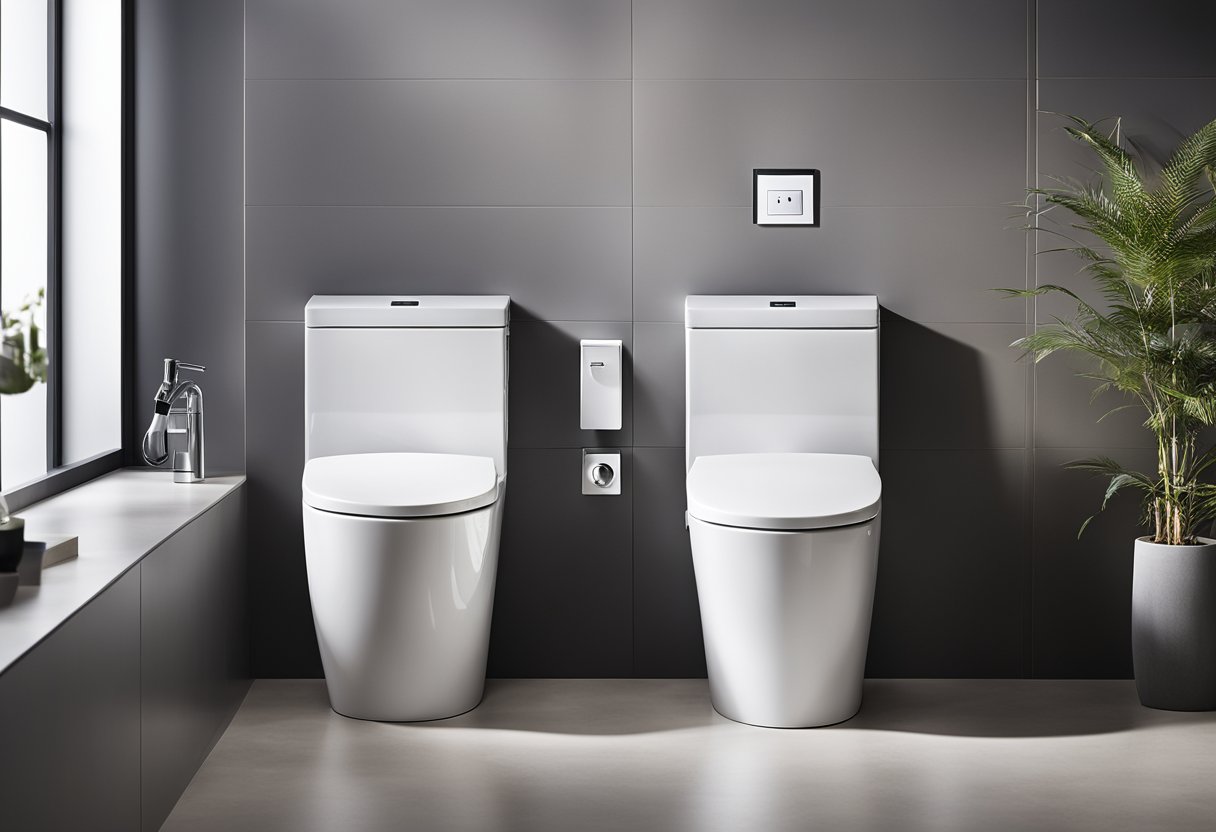
If you’re looking to upgrade your bathroom, you might want to consider some innovative design ideas for modern toilets. Here are some ideas that can inspire you to create a unique and functional space that meets your needs.
Technology and User Experience
Modern toilets can incorporate technology to enhance the user experience. For example, some toilets have motion sensors that automatically open and close the lid, and even flush the toilet. This hands-free feature can be especially useful for people with disabilities or mobility issues. You can also find toilets with built-in bidets, which can be more hygienic and comfortable than traditional toilet paper. Some toilets even have heated seats and foot warmers, which can be a luxurious addition to your bathroom.
Eco-Friendly and Sustainable Practices
Sustainability is an important consideration for many homeowners, and modern toilets can help you reduce your environmental impact. One design idea is to install a dual-flush toilet, which has two buttons that allow you to choose between a full flush and a half flush. This can save a significant amount of water over time, reducing your water bill and conserving a precious resource. Another eco-friendly option is to install a composting toilet, which uses natural processes to break down waste and create nutrient-rich soil. This can be a great option for off-grid homes or eco-conscious homeowners who want to reduce their carbon footprint.
Incorporating innovative design ideas into your modern toilet can help you create a unique and functional space. Whether you’re looking for inspiration to upgrade your HDB toilet design or just want to enhance your user experience, there are many options available. Consider incorporating technology and sustainable practices to create a truly modern and eco-friendly bathroom.
Safety and Accessibility
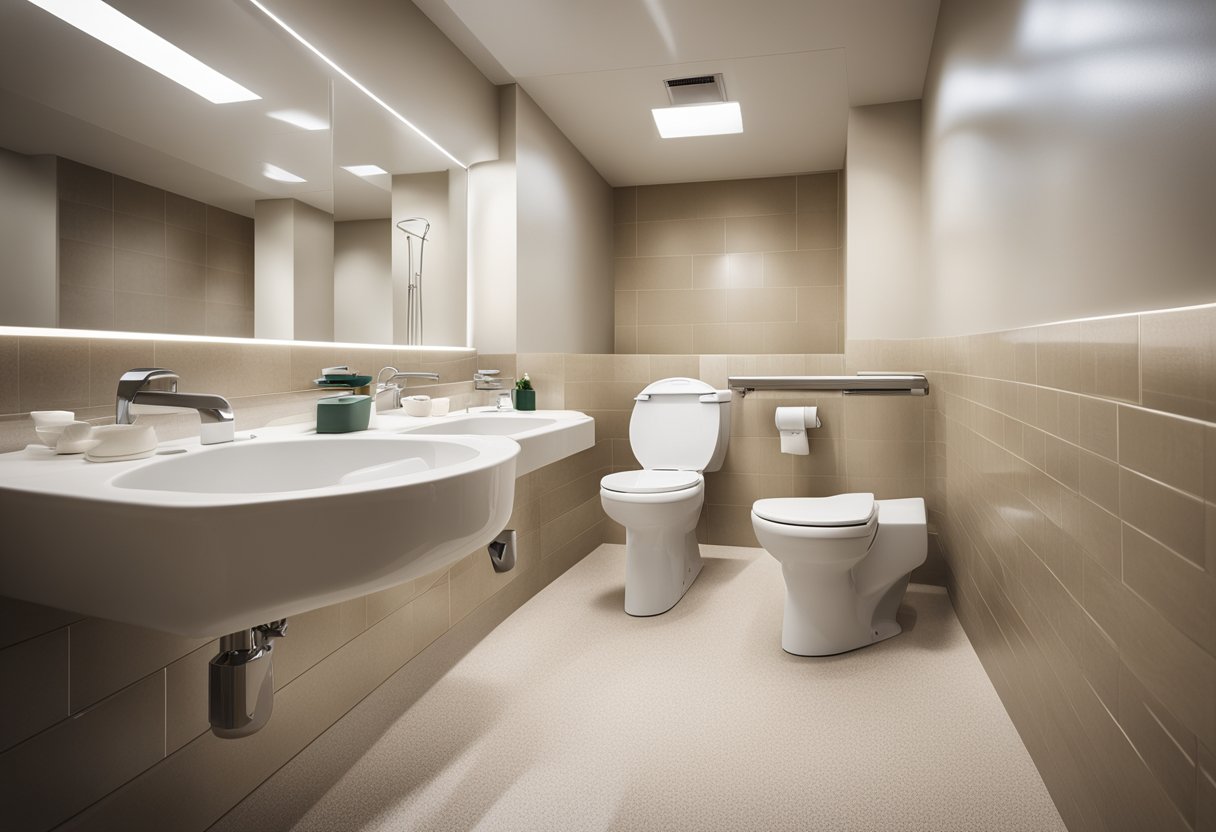
Toilet design is an important aspect of building design. Ensuring safety and accessibility in toilet design is crucial to creating a comfortable and inclusive environment for everyone. Incorporating safety features and designing for accessibility are two key elements to consider when designing a toilet.
Incorporating Safety Features
Safety should be a top priority when designing a toilet. One way to do this is by incorporating grab bars. Grab bars provide support and stability for users, reducing the risk of falls and accidents. They should be strategically placed in areas where users may need extra support, such as near the toilet and the sink.
Another safety feature to consider is slip-resistant flooring. Wet floors can be hazardous, especially in a toilet environment. Slip-resistant flooring helps to reduce the risk of slips and falls, providing a safer environment for users.
Designing for Accessibility
Designing for accessibility is essential in creating a toilet that is inclusive for everyone. This involves making sure the toilet is accessible to users with disabilities. One way to do this is by ensuring there is enough space for a wheelchair to manoeuvre in the toilet. This includes having enough space around the toilet and sink, as well as enough space to enter and exit the toilet.
Another aspect of designing for accessibility is ensuring that the toilet is at the right height. The toilet should be at a height that is comfortable for all users, including those with disabilities. This can be achieved by installing an adjustable toilet seat or by having toilets at different heights.
In conclusion, incorporating safety features and designing for accessibility are crucial when designing a toilet. By doing so, you can create a safe and inclusive environment for all users.
Lighting and Mirrors
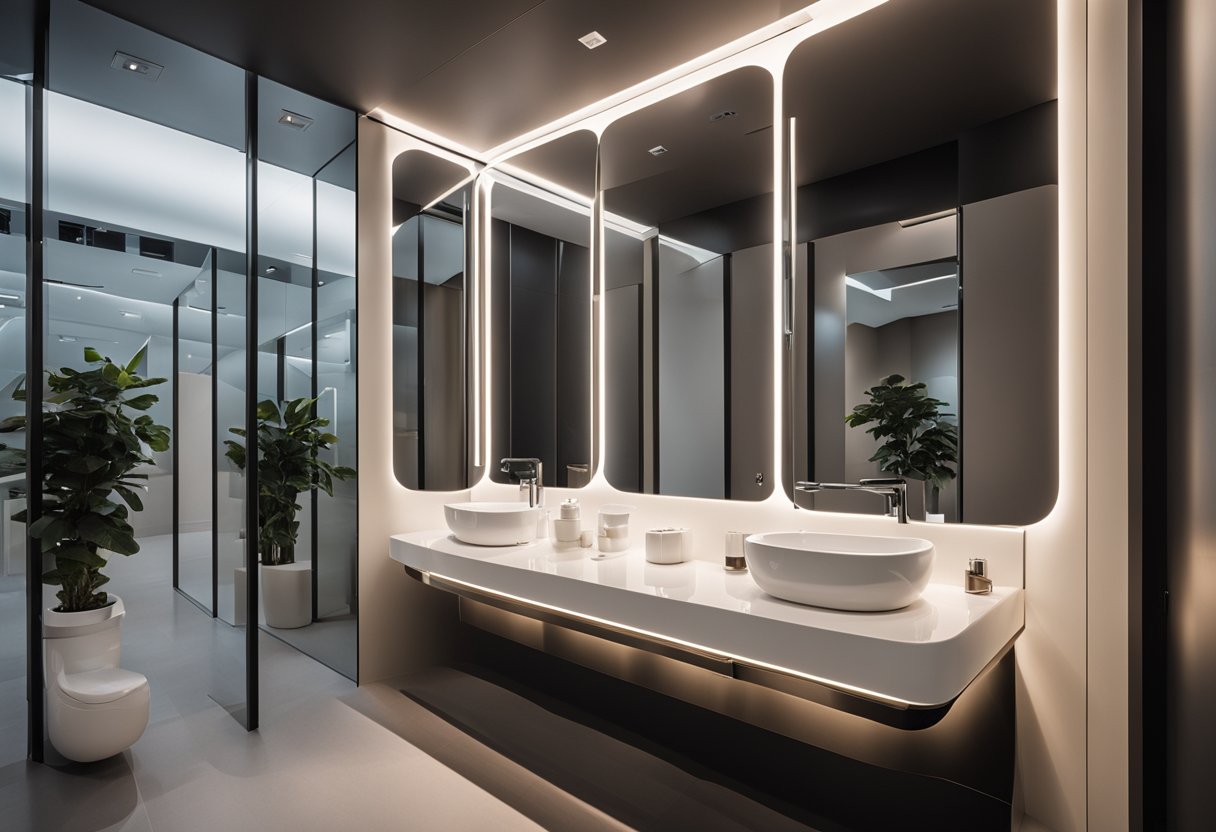
When it comes to designing your toilet, lighting and mirrors are two essential elements that can make a significant difference in the overall look and feel of the space. Here are some design ideas to help you make the most of these elements:
Strategic Use of Mirrors
Mirrors can be used strategically in your toilet design to create an illusion of space and light. Consider installing a large mirror on one of the walls to reflect light and make the room appear larger. You can also use mirrors to create a focal point in the room or to highlight a particular feature, such as a decorative tile or a piece of artwork.
Enhancing Atmosphere with Lighting
Lighting is another crucial element that can help enhance the atmosphere in your toilet. Consider using warm lighting to create a cosy and inviting feel, or spotlights to highlight specific areas of the room. You can also use lighting to create a focal point, such as a chandelier or pendant light, or to highlight a particular feature, such as a decorative tile or a piece of artwork.
When it comes to lighting, it’s important to consider both function and style. You want your toilet to be well-lit, but you also want it to look good. Consider using a combination of different types of lighting, such as overhead lights, wall sconces, and table lamps, to create a layered and dynamic look.
In summary, by strategically using mirrors and enhancing the atmosphere with lighting, you can transform your toilet into a stylish and functional space that you’ll love spending time in.
Toilet Design in Singapore

Are you a Singaporean homeowner looking to renovate or design your HDB toilet? Look no further! This section will provide you with all the information you need to know about toilet design in Singapore, including HDB toilet design and renovation permits and regulations.
Singaporean HDB Toilet Design
When it comes to HDB toilet design in Singapore, it’s all about marrying form with functionality. With limited space and specific regulations that apply to HDB flats, it’s important to make the most out of the available space while still maintaining an aesthetically pleasing design.
One popular design trend for HDB toilets is to match the colours of the flooring and walls with the tiles and walls. This creates a cohesive look that makes the toilet appear roomier. Another design trend is to incorporate plants into the toilet design, which not only adds a touch of greenery but also helps to purify the air.
Renovation Permits and Regulations
Before you start renovating your HDB toilet, it’s important to obtain the necessary permits and adhere to the regulations set by the Housing and Development Board (HDB). For instance, if you’re renovating a resale flat, you’ll need to obtain a renovation permit from HDB. You’ll also need to engage a HDB Registered Renovation Contractor (RRC) to carry out the renovation works.
Additionally, there are specific regulations that apply to HDB toilet renovations, such as the prohibition of hacking the floor finishes and waterproofing membrane. It’s important to consult with your RRC to ensure that your renovation plans comply with HDB regulations.
In conclusion, designing and renovating your HDB toilet in Singapore can be a challenging but rewarding endeavour. By incorporating design trends that make the most out of the available space and adhering to HDB regulations, you can create a functional and aesthetically pleasing toilet that meets your needs and preferences.
Finishing Touches
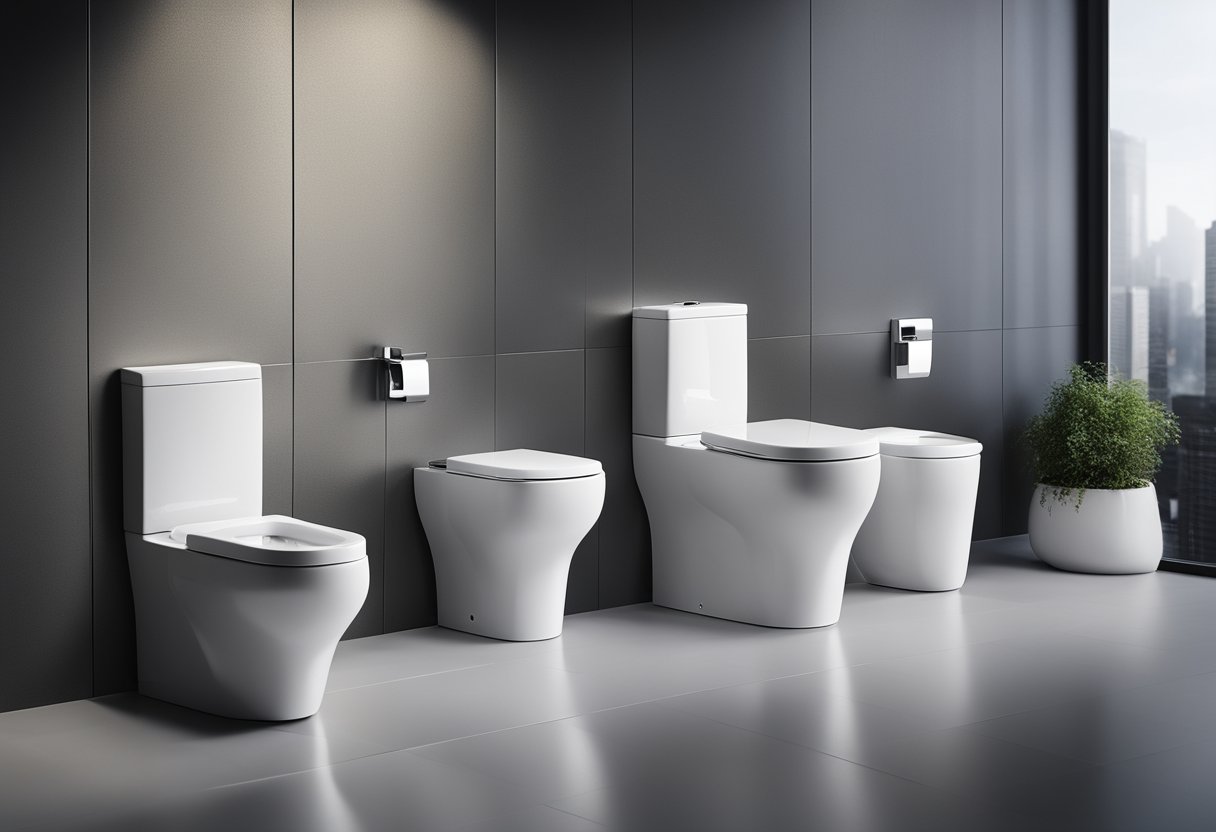
Congratulations, you’ve made it to the final stage of designing your toilet! The finishing touches are what will make your toilet truly unique and add personality to your space. In this section, we’ll go over some tips and tricks to accessorise your toilet and add the final touches before the big reveal.
Accessorising Your Toilet
Accessories are a great way to add a personal touch to your toilet. Consider adding a towel rack, a soap dispenser, or a toothbrush holder. You could also add a toilet roll holder or a toilet brush holder to keep everything neat and tidy.
When choosing accessories, think about the overall style of your toilet. If you have a modern toilet, consider sleek, minimalist accessories. If you have a more traditional toilet, consider accessories with more ornate details.
Final Touches Before the Big Reveal
Now that you’ve chosen your accessories, it’s time to add some final touches to your toilet. Consider adding some textures and patterns to your space. You could add a patterned shower screen or shower stall, or add some texture to your walls with a false wall.
Plants are also a great way to add some life to your toilet. Consider adding a small potted plant or a vase of fresh flowers to brighten up your space.
Finally, don’t forget about lighting. Good lighting can make all the difference in your toilet. Consider adding a dimmer switch or some stylish lighting fixtures to create a relaxing ambiance.
With these final touches, your toilet is now complete! Step back and admire your hard work. Your toilet is now a reflection of your personal style and taste.
Frequently Asked Questions
What are the latest trends in modern bathroom toilets?
Modern bathroom toilets are designed to be sleek, stylish and functional. One of the latest trends in toilet design is the use of smart toilets, which come with features like automatic flushing, heated seats, and built-in bidets. Another trend is the use of wall-hung toilets, which are mounted on the wall and leave the floor space underneath open, creating a more spacious and open feel to the bathroom.
How can I maximise space in a compact toilet layout?
When designing a compact toilet layout, it’s important to maximise the available space while still ensuring that the toilet is functional and comfortable to use. One way to do this is by using a wall-hung toilet, which frees up floor space and creates a more open feel. Another option is to use a corner toilet, which is designed to fit into the corner of a room and can save valuable floor space.
What are some simple yet stylish toilet design ideas?
If you’re looking for simple yet stylish toilet design ideas, consider using a neutral colour palette, such as white or beige, and incorporating natural materials like wood or stone. Using a wall-mounted toilet and sink can also create a sleek and modern look. Adding plants or artwork can also add a touch of personality and style to the space.
What should I consider when planning the design of a small bathroom and toilet?
When planning the design of a small bathroom and toilet, it’s important to maximise the available space while still ensuring that the space is functional and comfortable to use. Consider using a wall-mounted toilet and sink to free up floor space, and using light colours and natural materials to create a more open and airy feel. Storage is also important in a small bathroom, so consider using floating shelves or built-in cabinets to maximise storage space.
Could you suggest some innovative features for a luxury toilet design?
Some innovative features for a luxury toilet design include heated seats, automatic flushing, built-in bidets, and self-cleaning functions. Another option is to incorporate smart technology, such as voice-activated controls or sensors that adjust the lighting and temperature based on the user’s preferences.
What are the best practices for designing a public washroom that’s both functional and appealing?
When designing a public washroom, it’s important to consider factors like accessibility, hygiene, and privacy. Use materials that are easy to clean and maintain, and ensure that the toilet and sink are accessible to users with disabilities. Consider using partitions or screens to create a sense of privacy, and ensure that the lighting is bright and even throughout the space.


